Replace Petraeus
Gen. David Petraeus has proven the rule that past military victories do not guarantee future success. The general has made a mess of Afghanistan and Pakistan, yet he remains dangerously popular.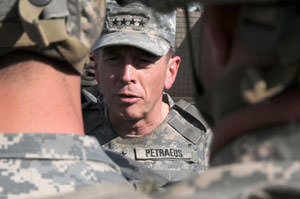
Gen. David Petraeus’ aura of success resulting from reduced violence in Iraq has blinded normally sensible observers to his far greater failure in Afghanistan and Pakistan. His ill-conceived effort to deny al-Qaida and the Taliban “safe havens” in Pakistan — through drone aircraft bombing, special-forces assassination and perhaps torture (by way of association with Gen. Stanley McChrystal, his new Afghanistan military commander) — has backfired, driving the Taliban east into Pakistan, where they have joined local allies to weaken the Pakistani government. It has also strengthened, not weakened, al-Qaida and alienated growing numbers of Pakistanis. The Petraeus strategy has thus dramatically strengthened America’s enemies and helped destabilize a nuclear-armed nation of 170 million whose importance dwarfs Iraq and Afghanistan combined. More alarmingly, he now intends to escalate his failed strategy, which could cause unimaginable catastrophes in coming months and years.
President Obama — who may well regret his call as a candidate for attacking Taliban safe havens in Pakistan, given the debacle those attacks have produced — should replace Petraeus, and McChrystal’s nomination should be blocked. However, Obama is unlikely to take such an action absent significant public pressure. Petraeus has enormous leverage over the president. The general is extremely popular because of the perceived success of the Iraqi surge. The Obama administration could be capsized by a combination of likely losses in the “Af-Pak”¬ theater and the popular Petraeus resigning and blaming Obama, one imagines, for “not listening to his military commanders.” Obama could even be defeated in 2012 by Petraeus himself on those grounds, should persistent Washington rumors about a nascent “Petraeus for President” campaign prove true.
Obama’s best political defense if his Middle East policy fails, as appears likely, would be to claim he was following the military’s lead. This may explain why he has reversed himself and adopted such Bush policies as military tribunals and preventive detention.
It is critical now for Congress, the media, opinion makers and the public to undertake an objective analysis of the basic question: Has the Petraeus strategy worked in the Afghanistan-Pakistan theater?
The general’s “Iraqi surge” strategy is irrelevant to this question. Past military victories do not guarantee future success. Petraeus has been no more successful in “Af-Pak” than the creators of the Maginot Line were in World War II, generals who had succeeded in World War I.
When Petraeus became head of CENTCOM (the U.S. Central Command) in October 2008, he became America’s chief military strategist for the theater, overseeing Iraq, Afghanistan, Pakistan, the Middle East and Central Asia.
Petraeus clearly sees himself as the central player in the region. When a New York Post interviewer stated on May 19, “As the commander of the US Central Command, you’re the big-picture `strategy guy,’ ” Petraeus did not demur. Instead he referred to his “strong” team of generals — McChrystal, David Rodriguez and Karl Eikenberry (the new U.S. ambassador to Afghanistan) — and added that “I’m privileged to have Ambassador Richard Holbrooke as my `diplomatic wingman.’ ” The perceived success of the surge in Iraq had given Petraeus tremendous power, allowing him to extend the strategy to the Afghanistan-Pakistan theater.
The most important mission of the general, as overall theater commander, has been to design a strategy to ensure that fighting in Afghanistan does not destabilize its nuclear-armed neighbor Pakistan. He has failed in this mission.
David Kilcullen, Petraeus’ own counterinsurgency adviser in Iraq, has characterized U.S. policy as a fundamental “strategic error … our insistence on personalizing this conflict with Al Qaeda and the Taliban, devoting time and resources toward killing or capturing ‘high-value’ targets … distracts us from larger problems.”
As Kilcullen had noted earlier, these “larger problems” include the potential “collapse of the Pakistani state,” which he called a calamity that in light of the country’s size, strategic location and nuclear stockpile would “dwarf” all other dangers in the region. While Petraeus obviously does not bear sole responsibility for all problems in the Af-Pak theater, his many “strategic errors” have played a major role in weakening the U.S. and strengthening its enemies, as I will outline below.
Petraeus has driven the Taliban east into Pakistan, where they have joined with local jihadi forces and gained increasing amounts of territory.
On Feb. 16, The New York Times reported from Pakistan, “Analysts are now suggesting that the drone strikes may be pushing the Taliban, and even some Qaeda elements, out of the tribal belt and into Swat, making the valley more important to the Taliban.” The Swat Valley is part of Pakistan proper, and the consolidation of Taliban forces there represented a major setback to U.S. and Pakistani interests. Pakistani government weakness there forced Islamabad to hand over effective control of the valley to its enemies and accept the imposition of sharia law there. A month and a half later, the Times followed up, saying, “American policy has arguably made the situation even worse, for the Predator-drone attacks along the border, though effective, drive the Taliban eastward, deeper into Pakistan. And the strategy has been only reinforcing hostility to the United States among ordinary Pakistanis.”
With Swat as a base, Taliban forces then took over the Buner district in late April.
And, most ominously, the Taliban and local extremists have been making inroads into the Punjab, Pakistan’s heartland, as the Times documented: “Taliban insurgents are teaming up with local militant groups to make inroads in Punjab, the province that is home to more than half of Pakistanis, reinvigorating an alliance that Pakistani and American authorities say poses a serious risk to the stability of the country. … As American drone attacks disrupt strongholds of the Taliban and Al Qaeda in the tribal areas, the insurgents are striking deeper into Pakistan — both in retaliation and in search of new havens. … Bruce Riedel, who led the Obama administration’s recently completed strategy review of Pakistan and Afghanistan, said the Taliban now had ‘extensive links into the Punjab.’ ” The Petraeus strategy has strengthened radical Islamic groups within Pakistan.
On April 20, The Washington Post reported that “a suspected U.S. missile strike killed three people at a Taliban compound in the South Waziristan tribal region; such attacks have become a powerful recruitment tool for extremist groups in Pakistan as anti-American sentiment builds.” Extremist success has worked to “create an arc of radical religious energy between the turbulent, Taliban-plagued northwest region and the increasingly vulnerable federal capital, less than 100 miles to the east. They [extremists] also appeared to pose a direct, unprecedented religious challenge to modern state authority in the Muslim nation of 176 million.”
Post columnist David Ignatius reported on an April meeting between regional envoy Richard Holbrooke and Joint Chiefs of Staff Chairman Adm. Michael Mullen with Waziristan tribal leaders: ” `We are all Taliban,’ ” one young man said — meaning that people in his region support the cause, if not the terrorist tactics. He explained that the insurgency is spreading in Pakistan, not because of proselytizing by leaders such as Baitullah Mehsud but because of popular anger. For every militant killed by a U.S. Predator drone, he says, 10 more will join the insurgent cause. … `You can’t come see the people because they hate you,’ he warned.”
Counterinsurgency adviser Kilcullen has warned that the drone war “has created a siege mentality among Pakistani civilians … [is] now exciting visceral opposition across a broad spectrum of Pakistani opinion in Punjab and Sindh, the nation’s two most populous provinces. … “
The Petraeus strategy has also strengthened al-Qaida.
Al-Qaida’s success in Pakistan — including attracting recruits and joining forces with local extremists — makes it unclear whether the terror network would even bother to return to Afghanistan should the Taliban regain power there. A senior intelligence official told The New York Times that “recent successes by the Taliban in extending territorial gains could foreshadow the creation of `mini-Afghanistans’ around Pakistan that would allow militants even more freedom to plot attacks.” Al-Qaida would presumably be as welcome in such new “mini-Afghanistans” as it is presently in Pakistan’s Northwest Frontier, and even safer.
Petraeus’ strategy is increasing support for a “Pashtunistan,” threatening Pakistan and Afghanistan’s survival.
By attacking Pashtuns in both Afghanistan and Pakistan, Petraeus is increasing local support for a radical Islamic entity combining the 13 million Afghan and 28 million Pakistani Pashtuns on either side of the artificial Durand Line dividing the two countries. As Selig Harrison wrote in The Washington Post on May 11: “It is equally plausible that the result could be what Pakistani ambassador to Washington Husain Haqqani has called an `Islamic Pashtunistan.’ On March 1, 2007, Haqqani’s Pashtun predecessor as ambassador, the retired Maj. Gen. Mahmud Ali Durrani, said at a seminar at the Pakistan Embassy, `I hope the Taliban and Pashtun nationalism don’t merge. If that happens, we’ve had it, and we’re on the verge of that.’ ”
Petraeus’ strategy helped push the Pakistani military into a disastrous military operation that is strengthening the government’s enemies over the long term.
As Kilcullen has noted,”Al Qaeda and its Taliban allies must be defeated by indigenous forces — not from the United States, and not even from Punjab, but from the parts of Pakistan in which they now hide. Drone strikes make this harder, not easier.” All observers agree that if Pakistan is to be stabilized, the Pakistani military will need to shift its priorities from defending against India and learn to wage an effective counterinsurgency war within Pakistan.
Petraeus’ blunders and U.S. threats to withhold military and economic aid have helped force the clearly unprepared Pakistani military into premature fighting in the Swat Valley, creating 2 million refugees in the process — what the United Nations, quoted in the Guardian, dubbed “the world’s most dramatic displacement crisis since the Rwandan genocide of 1994.” Even if the Pakistani military succeeds in retaking Swat, it has alienated much of the local population with heavy bombardment. And it is unlikely to defeat the Taliban in the long run, as the Post explained on May 24: “Highlighting the difficulty, some extremists are simply melting back into the civilian population so they can fight another day, as they have during previous clashes over the past 18 months in Swat.”
A “senior [Obama] administration official who is closely following the Pakistani military operations in Swat, and who spoke on condition of anonymity to avoid offending the visiting Pakistani leaders,” was even more blunt, telling the Times on May 6 that the Pakistan military is “fundamentally not organized, trained or equipped for what they’ve been asked to do. … They will displace the Taliban for a while. But there will also be a lot of displaced persons and a lot of collateral damage. And they won’t be able to sustain those effects or extend the gains geographically.” There is also growing concern that the military’s mismanaged offensive will actually strengthen extremist forces, reports the Post: “Concern is growing that this latest wave of displacement will create a fresh crop of Pakistanis with grievances against the government and loyalty to groups that seek to undermine the state through violent insurgency. … Outside the camps, groups with radical Islamist agendas are rushing to fill the void left by the paucity of government services.”
The most alarming aspect of the present situation is not only that Gen. Petraeus has shown no awareness of his “Af-Pak” strategy’s failure but is clearly intending to expand it, beginning this summer when U.S. troop strength reaches 58,000. Petraeus and McChrystal are planning for an increase in attacks upon Taliban strongholds, which will inevitably lead to greater U.S. efforts to deny the Taliban a haven in Pakistan.
Petraeus told the N.Y. Post on May 19: “Expect tough fighting. As we and our allies launch operations to improve security, the enemy will fight back. When we launched the `surge of offensives’ in Iraq, al Qaeda-Iraq elements sought to retain their sanctuaries and safe havens. We experienced tough combat. We’ll see the same in Afghanistan.”
Ignatius reported a few days earlier that “Petraeus’s plan in Afghanistan is to hit the enemy very hard this year with the additional 21,000 troops President Obama has approved — and then see if the Taliban coalition begins to crack. Much greater violence is ahead initially, as the United States attacks Taliban sanctuaries in the south.”
There are also indications that Petraeus is planning deeper incursions into Pakistan in support of these efforts. The New York Times ran a story in March saying: “In separate reports, groups led by both Gen. David H. Petraeus, commander of American forces in the region, and Lt. Gen. Douglas E. Lute, a top White House official on Afghanistan, have recommended expanding American operations outside the tribal areas if Pakistan cannot root out the strengthening insurgency.” These operations would “strike at a different center of Taliban power in Baluchistan, where top Taliban leaders are orchestrating attacks into southern Afghanistan.”
Thus, as Petraeus aggressively seeks to destroy the Taliban, he is likely to wind up going after Taliban “sanctuaries and safe havens” in Pakistan, and we can expect a vast expansion of the U.S. special operations that have already done so much to help jihadi forces.
The clearest indication of what Petraeus has in mind is the appointment of his protégé, Gen. McChrystal, to command U.S. forces in Afghanistan. McChrystal ran the top-secret JSOC (Joint Special Operations Command) in Iraq from 2003 to 2008.
McChrystal’s appointment, according to the Times, was explicitly designed to help expand U.S. operations into Pakistan: “Until now, the successive American generals in charge of the war in Afghanistan have argued that their responsibilities ended at the border with Pakistan. But the choice of a new and very different breed of general to take over the seven-year-old fight may mean the old mind-set has begun to change. … General McChrystal, with his commando background, is ideally suited to carry out a White House strategy that regards Afghanistan and Pakistan as part of a single, urgent problem. `For him to be successful, he’s going to have [to] fight the war on both sides of the border,’ said Robert Richer, a retired C.I.A. officer who worked with General McChrystal when Mr. Richer was the agency’s head of Middle East operations and assistant director of clandestine operations.”
Bob Woodward wrote in his book “The War Within”: “Beginning in about May 2006, the U.S. military and the U.S. intelligence agencies launched a series of top secret operations that enabled them to locate, target and kill key individuals in extremist groups such as al Qaeda, the Sunni insurgency and renegade Shia militias, or so-called special groups. … A number of authoritative sources say these covert activities had a far-reaching effect on the violence and were very possibly the biggest factor in reducing it. … ” The book goes on to quote praise directed at “Lieutenant General Stanley McChrystal, the commander of the Joint Special Operations Command (JSOC) responsible for hunting al-Qaida in Iraq. … “
Placing McChrystal in charge of U.S. Afghanistan forces indicates that Petraeus agrees with Woodward’s report on the success of McChrystal’s tactics, and that they might be applied on a far larger scale in the Af-Pak theater. Reminiscent of the Phoenix assassination program in Vietnam, a program that set weekly quotas on the number of civilians to be killed for supposedly supporting the Viet Cong, McChrystal is known for applying constant pressure on his officers to produce greater numbers of kills, and promoting them on that basis. As former Special Forces officer Roger Carstens noted: “McChrystal kills people. Has he ever worked in the counterinsurgency environment? Not really.” McChrystal was also known for running the worst torture chambers in Iraq at his “Camp Nama,” (“Nasty Ass Military Area”), and forbidding the Red Cross access to them in violation of the Geneva Conventions. The Times fills in the details of the general’s résumé: “An elite Special Operations forces unit converted one of Saddam Hussein’s former military bases near Baghdad into a top-secret detention center. There, American soldiers made one of the former Iraqi government’s torture chambers into their own interrogation cell. … According to Pentagon specialists who worked with the unit, prisoners at Camp Nama often disappeared into a detention black hole, barred from access to lawyers or relatives, and confined for weeks without charges. `The reality is, there were no rules there,’ another Pentagon official said. … The C.I.A. was concerned enough to bar its personnel from Camp Nama that August. … Since 2003, 34 task force members have been disciplined in some form for mistreating prisoners. … ” In May of 2006, Esquire interviewed a former Camp Nama interrogator named Jeff: “By his reckoning, at least half of the prisoners were innocent, just random Iraqis who got picked up for one reason or another. Sometimes the evidence against them was so slight, Jeff would go into the interrogation without even knowing their names.”
If McChrystal had little evidence against those he was imprisoning and torturing, it stands to reason he had no more solid grounds to judge those he was assassinating. And it was his teams that were responsible for on-the-ground targeting of the drones that have killed so many civilians. Kilcullen has estimated based on press reports that “over the last three years drone strikes have killed about 14 terrorist leaders. But, according to Pakistani sources, they have also killed some 700 civilians.” McChrystal bears much of the responsibility for this.
However, there has been no outside oversight whatsoever of Gen. McChrystal’s activities in Iraq. He killed, assassinated and tortured countless Iraqis for five years with total impunity. Were international law applied to his activities, he might well be investigated for war crimes rather than rewarded for them. Placing him in charge of 58,000 U.S. troops will ensure that such practices will not only continue but be greatly increased.
His tactics are militarily self-defeating as well as morally questionable. As discussed above, numerous U.S. and Pakistani observers blame such tactics for the growing strength of America’s enemies. The evidence clearly indicates that if Petraeus and McChrystal continue their policies in the Afghanistan-Pakistan theater, the United States could find itself facing its worst crisis since World War II.
Over the longer term, the nightmare scenarios that could ensue include: the Pakistan government falling and one or more of its 60 to100 nuclear weapons landing in extremists’ hands; rogue elements within the Pakistani military or foreign infiltrators getting control of said weapons; instability leading to limited or greater fighting between Pakistan and India, another nuclear power; civil war within Pakistan leading to tens of millions of refugees and casualties, of which the Swat Valley fiasco would be only a foretaste.
Observers have suggested that the U.S. attempt to gain control of Pakistan’s nuclear weapons and remove them from the country, should the government be threatened. According to the Times, “As the insurgency of the Taliban and Al Qaeda spreads in Pakistan, senior American officials say they are increasingly concerned about new vulnerabilities for Pakistan’s nuclear arsenal, including the potential for militants to snatch a weapon in transport or to insert sympathizers into laboratories or fuel-production facilities.”
Unfortunately, the U.S. is unable to gain control of the weapons, for the inconvenient reason that “the United States does not know where all of Pakistan’s nuclear sites are located. … American officials have never been permitted to see how much of the [American] money [for nuclear safeguards] was spent, the facilities where the weapons are kept or even a tally of how many Pakistan has produced.”
In the event of the imminent collapse of the Pakistani government and nuclear weapons falling into extremist hands, what would the U.S. do? Invade and occupy Pakistan with hundreds of thousands of troops? That would probably require a reinstatement of the draft and possibly ignite an even wider war. Would we threaten an extremist government with our own nukes?
Preventing such nightmare scenarios should be America’s top priority, and reining in Gens. Petraeus and McChrystal is clearly necessary to doing so. Petraeus should be replaced and McChrystal’s nomination defeated if America is to have any serious hope of avoiding disaster in the Afghanistan-Pakistan theater.
|
Fred Branfman has covered the CIA and irregular war since the clandestine bombing of Laos. His work has appeared in Harper’s, Playboy, The Washington Monthly, Liberation and The Progressive, among others. |
Independent journalism is under threat and overshadowed by heavily funded mainstream media.
You can help level the playing field. Become a member.
Your tax-deductible contribution keeps us digging beneath the headlines to give you thought-provoking, investigative reporting and analysis that unearths what's really happening- without compromise.
Give today to support our courageous, independent journalists.
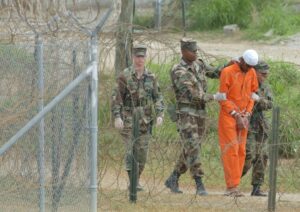
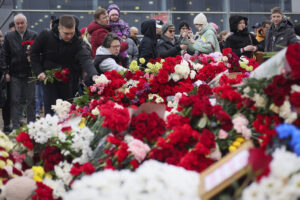


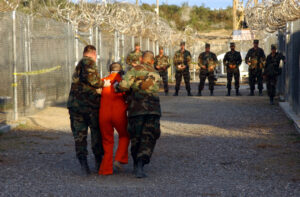
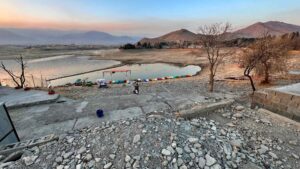
You need to be a supporter to comment.
There are currently no responses to this article.
Be the first to respond.